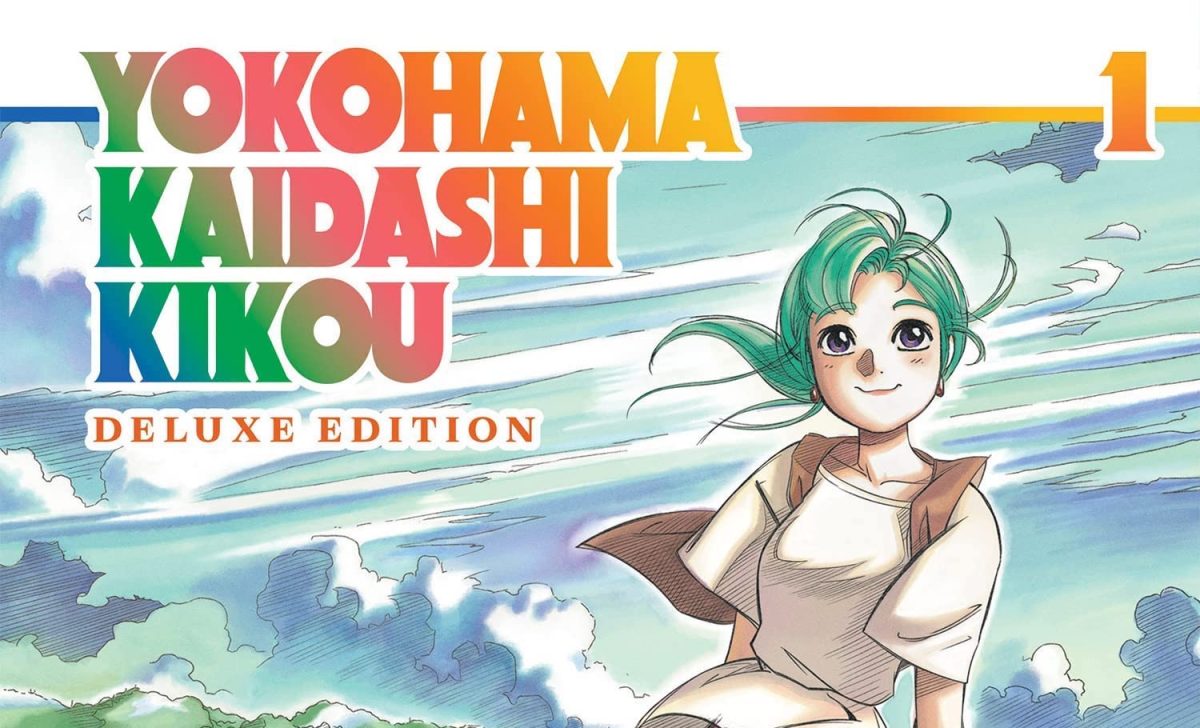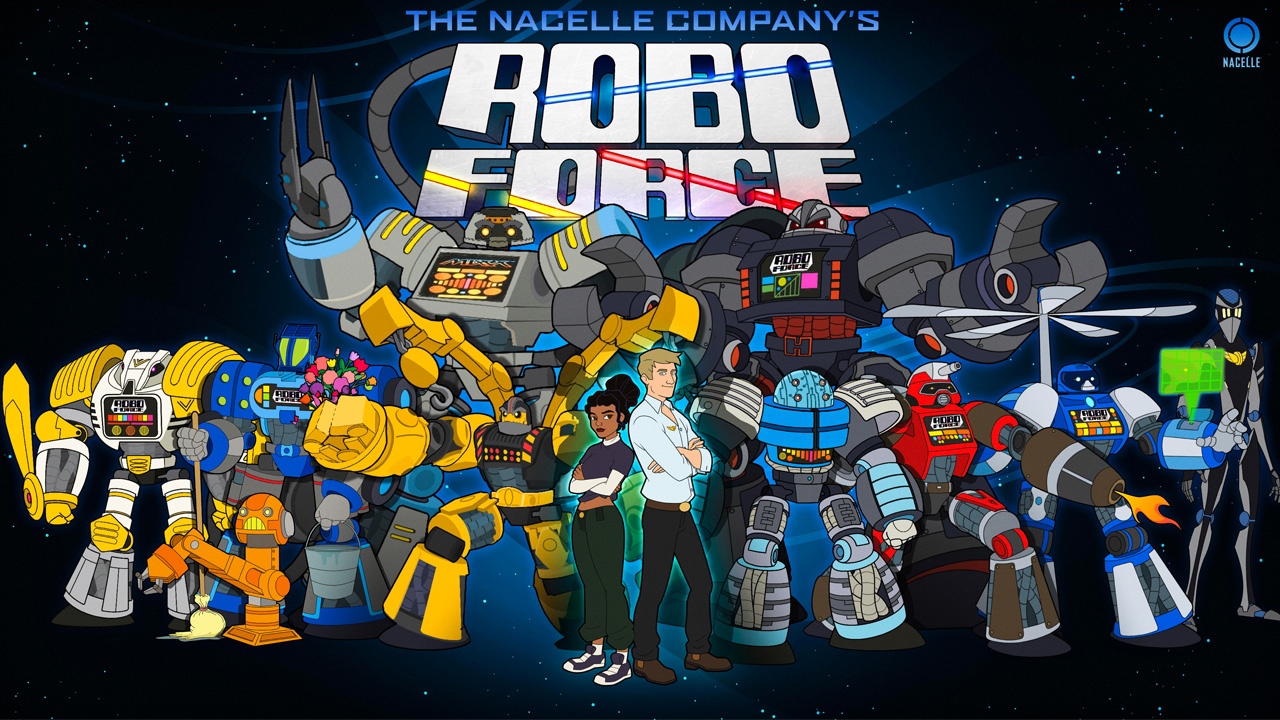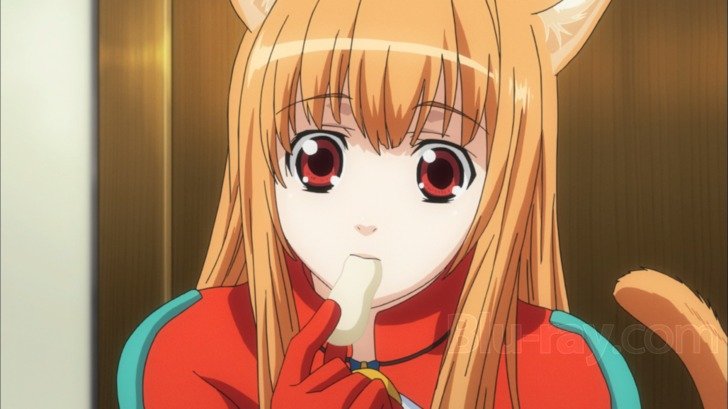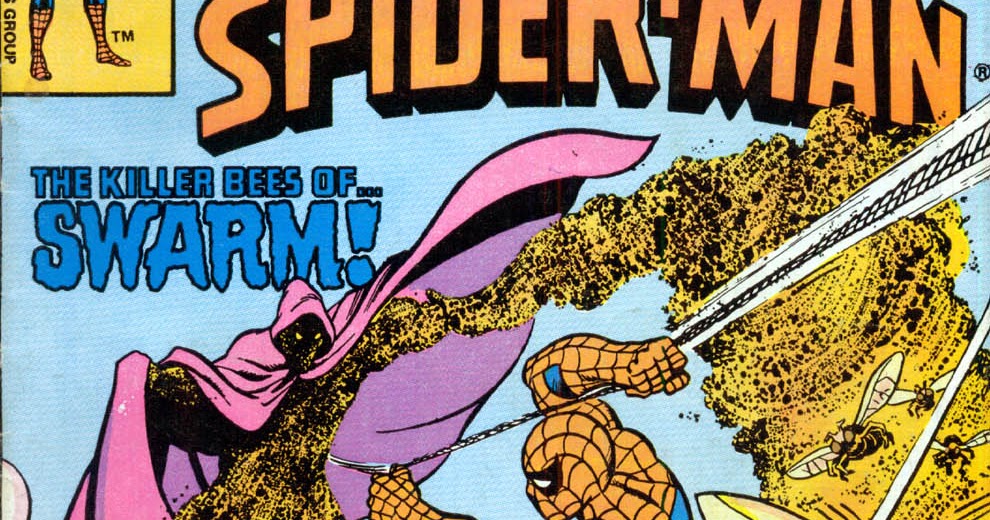With patience, sometimes we get what we wish for. I first encountered Yokohama Kaidashi Kikou in a pirated, scanlated online version back in 2009. I’d only been reading manga for a handful of years at that point, diving in as an escape from superheroes and maudlin autobio — it was give up comics, or find a new enthusiasm. Manga meant more genres, and books featuring young women, and more approaches to storytelling, such as this one.
The series, a pastoral fantasy created by Hitoshi Ashinano, was originally serialized from 1994 to 2006, eventually collected in 14 books. This Seven Seas edition, announced as 5 volumes in length, appears to double-up a 10-book reissue begun in 2009 in Japan. I hadn’t ever expected to see YKK in legitimate English translation at all, with the conventional wisdom finding it too long and too odd, but I’m glad it’s here. Particularly these last few years, I could use an escape into a quieter way of life, no matter how unlikely.
I first found out about YKK because a group of critics had done a roundtable on the series, describing it with words like “contemplative,” “serene,” “sentimental,” “nostalgia.” It’s calming, although it’s set after some kind of apocalypse. Most of the people are gone. Previous urban areas are now lakes.
A robot, left behind, runs a coffee shop while waiting for her owner to return. Not much happens in the 24 chapters (plus a prologue) included here. The robot rides her scooter on a shopping trip. She plays guitar in the evening for her neighbor, who runs a gas station, and his grandson. There are very few customers. The neighbor has too many watermelons and gives some away. A lightning strike requires a doctor’s visit. The robot’s owner sends her a camera as “an aid for your memory.” There’s a fireworks festival. Neighborhood men meet for drinks.
There are not many women in this series — but then, there are relatively few characters. Identified as female are the robot, the doctor, and a naked woman called the Osprey who lives in the bay and scares people, although she likes kids. Another robot, a courier, gives our coffee shop owner an important message by kissing her. At times like these, the seinen origin of this series shines through; YKK originally appeared in a magazine aimed at young men, and the protagonist has the gloss of a young man’s dream girl. Being a robot makes her perfect; an attractive innocent. It also gives her any new skill, such as dancing, that the story wants. I suspect this will mean more as the series goes on — and I admit, I researched future volumes and found out that the other characters age while she doesn’t, staying eternally young.
There are also recurring images of women wrapping themselves around the boy of the story. Back in the day, I wouldn’t have noticed, as I was just so glad to see a female character out exploring her world. I’m still used to reading comics not aimed at me. Anyway, it’s nice to see her friendship form with the other robot, as the two have much in common, and they make cute pen pals.
Also among the original points of appeal for me was Ashinano’s spare line art; it’s still a high point today. There are few solid blacks. The landscapes are open. The pages have only three or four panels. That can make for a quick read, but it also establishes a relaxed mood, a change from the frantic high school love stories or battle competitions I’d previously read in manga. Technically, this is science fiction, although if a reader who comes to it as such will likely be disappointed, as many questions about the setting and its origins remain unanswered. This volume opens with a set of color pinups, much of it cover art from various Japanese printings, which reinforce the idea of quiet moments to look at. The Japanese trade dress is maintained on these images; for the western reader, it accentuates the idea of a place elsewhere.
Five volumes is a good size for a release plan in English, but I found myself wishing we’d had more, shorter books. There’s a tendency, at least in my case, to read everything under one cover all at once, and this is a series that benefits from a more relaxed pace. The chapters convey their message best when the reader spends time with them, allowing the mood to seep over them. I should have stopped, putting the book down and picking it up again hours or days later.
Overall, there’s an odd comfort in watching people enjoy the aftermath of disaster. Still-rising water means maybe taking a different road or a longer route. Even with the hints that the planet will continue to overtake “civilization” — one gorgeous spread shows streetlights still glowing in an underwater town — no one seems bothered about it.
The appeal of this series is twofold: lovely art and an acceptance of the joy of existence. It’s a meditative read. My life is about what I can next accomplish, so I found Yokohama Kaidashi Kikou, in spite of its occasional attempt to appeal to the male gaze, a refreshing change of pace. It’s very Japanese in tone, but it also evokes Walden: the idea that a return to nature is soul-cleansing, and that small, everyday events are worth capturing.
(The publisher provided an advance digital review copy. Review originally appeared at The Comics Journal.)
Related Posts:





